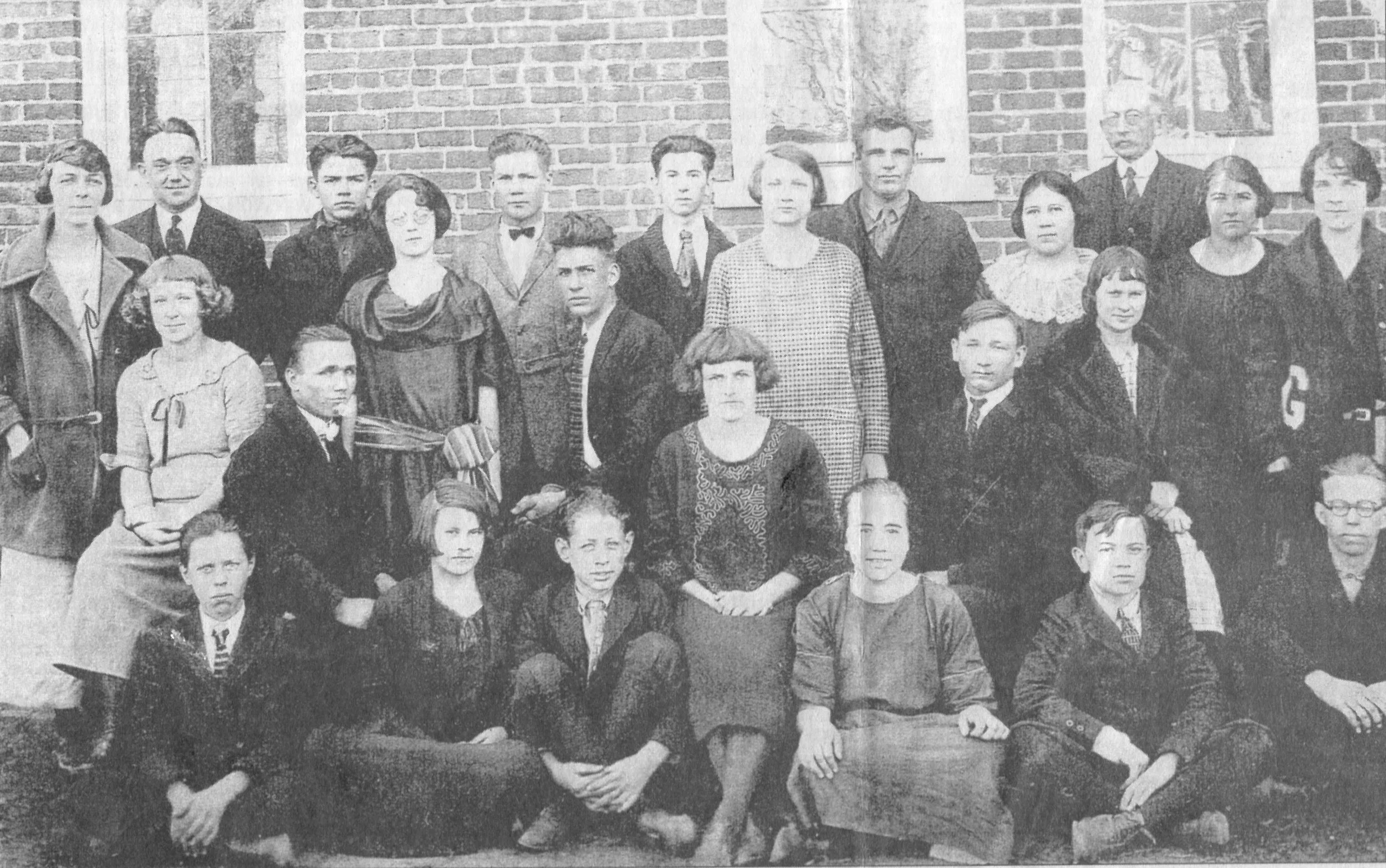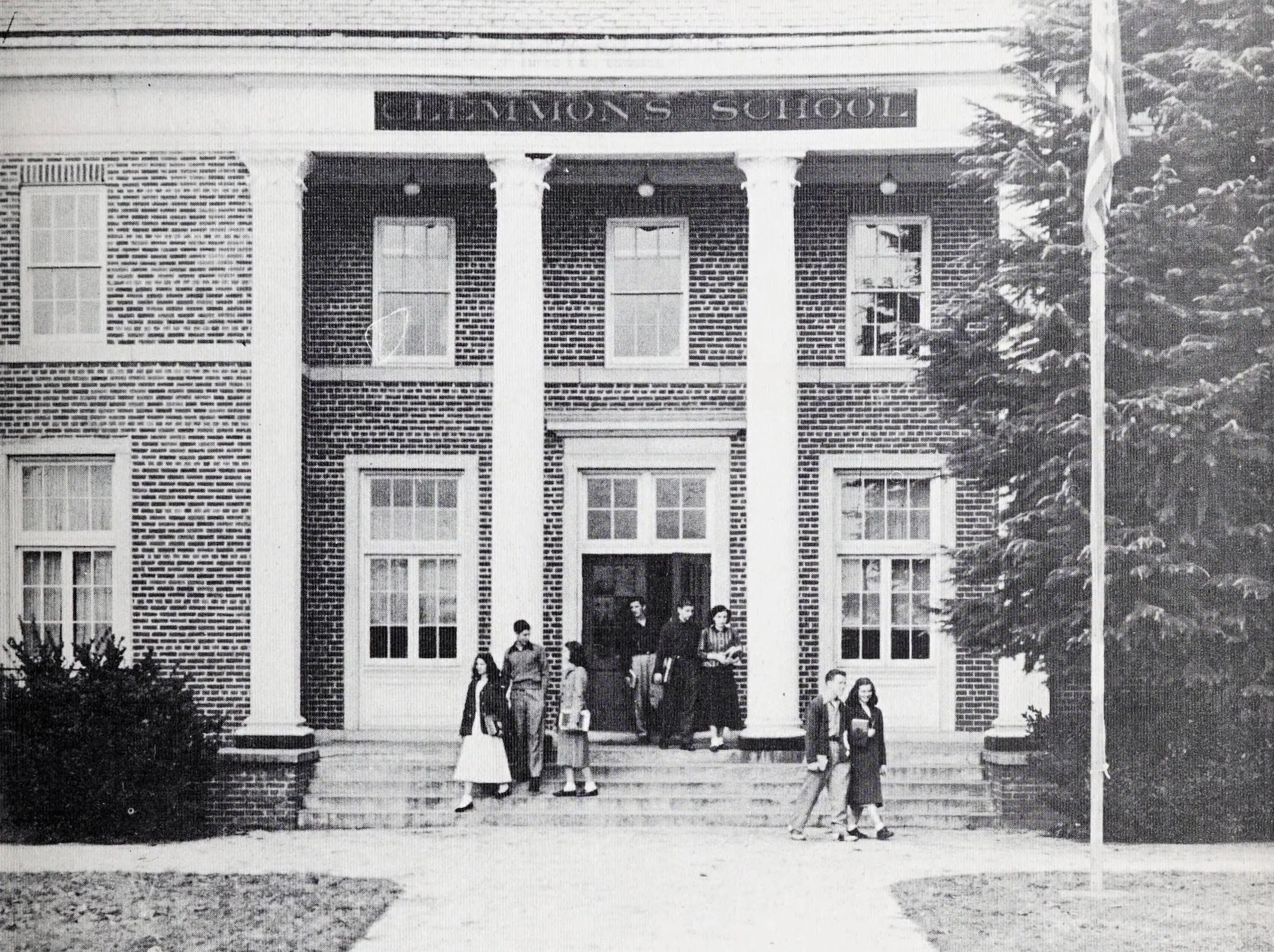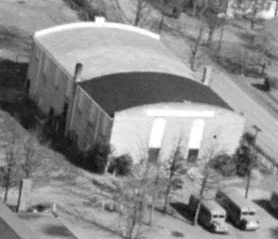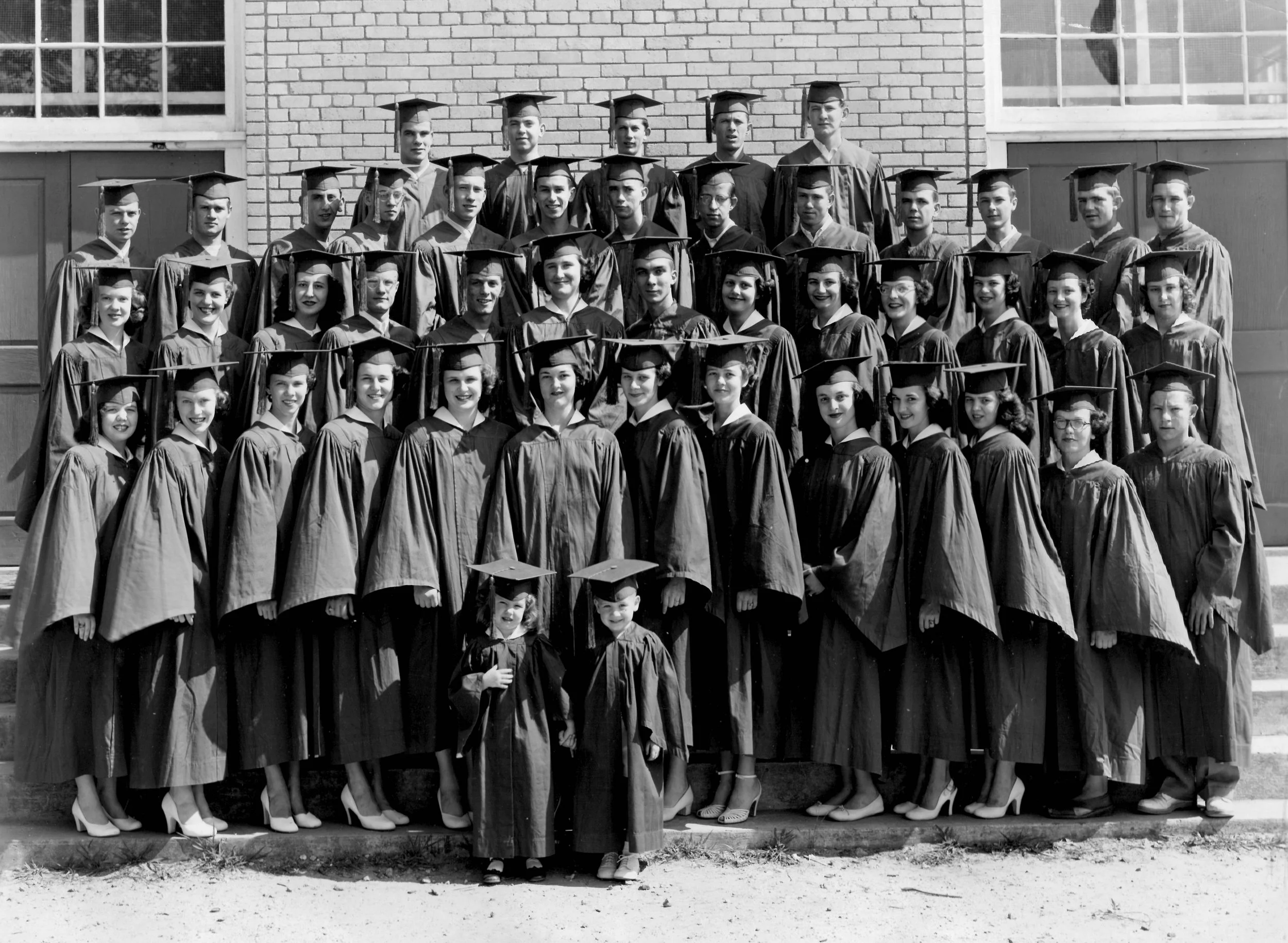Since 1925 this building has been close to the heart of the Clemmons community.
Old Clemmons School
Built in 1925,
the Old Clemmons School was more than a place of learning—
it was the center of community life. From its Moravian beginnings to
sports championships and cherished traditions,
these walls have witnessed a Century of Growth,
Laughter,
and Memories.
Clemmons School:
A Century of Legacy
From its 1901 beginnings to its centennial milestone, Clemmons School remains a cornerstone of history and community.
The story of Clemmons School began in 1901, when Bishop J. Kenneth Pfohl founded the Moravian Farm Life School near what is now Clemmons Moravian Church. By 1925, the community’s needs outgrew the original schoolhouse, and a new vision for education took shape. That year, the modern brick Clemmons School building opened on Highway 158, at a cost of $100,000. It became the first school in Forsyth County to earn full accreditation, allowing graduates to attend college without entrance exams—an impressive achievement for a village school at the time.
From the 1920s through the 1930s, Clemmons School became the heart of the community. Sports programs were launched, starting with basketball in 1925 and baseball in 1927, while student plays, Halloween carnivals, and clubs like the Key Club, Keyettes, FFA, and FHA took root. Principal Theodore Rondthaler, along with his wife Alice, introduced a school orchestra that went on to win six consecutive state championships between 1932 and 1937. Rondthaler also established the beloved Christmas Pageant in 1932, which became an annual tradition cherished for nearly 30 years. By the 1940s, Clemmons School was thriving, with the creation of its own newspaper, The Chatterbox, and the construction of a gymnasium in 1940. During World War II, the gym’s basement was repurposed into a cannery to support local families—a testament to the school’s role as a true community hub.
The 1940s and 1950s marked a golden era for Clemmons High School. Athletics flourished, with the first and only 11-man football team fielded in 1941, later replaced by the successful 1948 six-man state championship team after the war. The baseball program became a source of local pride, with state championship titles in 1944, 1948, 1949, and 1950. A $30,000 lighted athletic complex, completed in 1949 with funding from community efforts and generous support from William Neal Reynolds, cemented Clemmons as a center for local sports. By the 1950s, the school also boasted its own yearbook, Clemmemories, and continued to excel in academics, music, and extracurricular programs. However, in 1956, the high school graduated its final class as the county consolidated schools to form Southwest Forsyth High School. The building then transitioned into Clemmons Elementary School, which operated until its closure in 1981.
Rather than allow the building to fall into disrepair or be demolished, local philanthropist Edgar Broyhill stepped in to preserve this historic landmark. He purchased and renovated the structure, initially transforming it into the Edgar B Furniture Plantation, a mail-order furniture business that gave new life to the property. In 1995, the building was repurposed again as the Historic Broyhill Office Suites and Event Center, which continues to house businesses and events while preserving the school’s architectural and cultural legacy.
Today, as the building celebrates 100 years since its opening, the Old Clemmons School remains a powerful reminder of the community spirit, education, and shared memories that shaped generations. Through the continued commitment of Broyhill, its history is not only remembered but actively celebrated, ensuring that this landmark stands as both a tribute to the past and a gift for
the future.
Uncover the Journey
Discover the milestones, memories, and moments that shaped more than a century of history. Click on the images to explore the Timeline in greater detail.
Step Back in Time:
The Complete Timeline
Key Milestones
1901: Moravian Farm Life School founded by Bishop J. Kenneth Pfohl.
1925: New Clemmons School opens on Highway 158 – first Forsyth County school accredited for direct college admission.
1927–1930s: Sports teams, clubs, and orchestra
established; Christmas
Pageant tradition begins.1940: WPA-built gymnasium added; basement used as WWII community cannery.
1948,‘49,‘50: Won three consecutive Baseball State Championships, lighted athletic
facility built.1956: Final high school graduating class;
building becomes Clemmons Elementary.1981: Clemmons Elementary closes; Edgar Broyhill saves building from demolition
and repurposes it.1995: Reopens as Historic Broyhill Office Suites
& Event Center.2011: W. Frank Morgan Elementary named after the Old Clemmons school’s last principal.
2025: Old Clemmons School celebrates
100 years!






